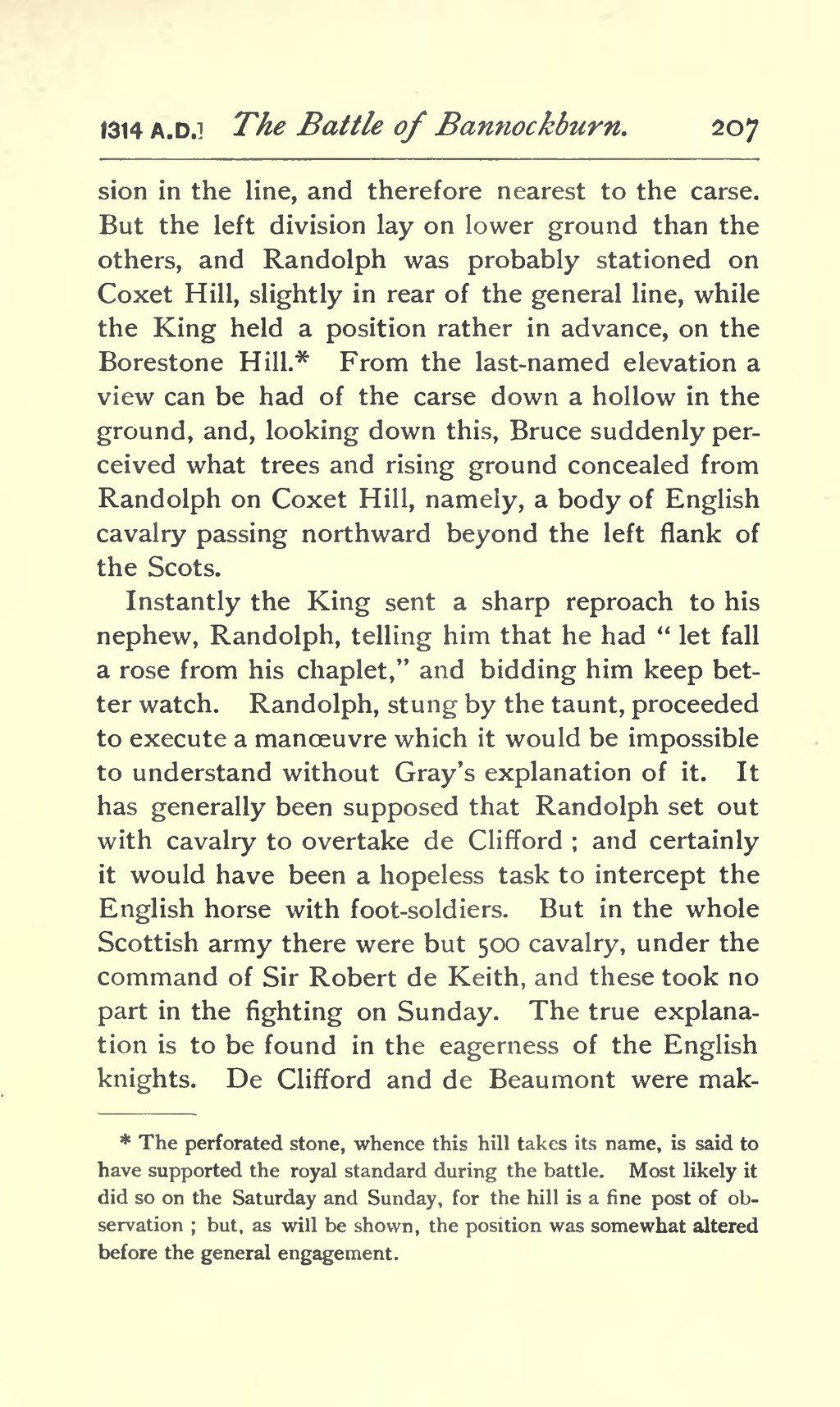sion in the line, and therefore nearest to the carse. But the left division lay on lower ground than the others, and Randolph was probably stationed on Coxet Hill, slightly in rear of the general line, while the King held a position rather in advance, on the Borestone Hill.[1] From the last-named elevation a view can be had of the carse down a hollow in the ground, and, looking down this, Bruce suddenly perceived what trees and rising ground concealed from Randolph on Coxet Hill, namely, a body of English cavalry passing northward beyond the left flank of the Scots.
Instantly the King sent a sharp reproach to his nephew, Randolph, telling him that he had "let fall a rose from his chaplet," and bidding him keep better watch. Randolph, stung by the taunt, proceeded to execute a manœuvre which it would be impossible to understand without Gray's explanation of it. It has generally been supposed that Randolph set out with cavalry to overtake de Clifford; and certainly it would have been a hopeless task to intercept the English horse with foot-soldiers. But in the whole Scottish army there were but 500 cavalry, under the command of Sir Robert de Keith, and these took no part in the fighting on Sunday. The true explanation is to be found in the eagerness of the English knights. De Clifford and de Beaumont were mak-
- ↑ The perforated stone, whence this hill takes its name, is said to have supported the royal standard during the battle. Most likely it did so on the Saturday and Sunday, for the hill is a fine post of observation; but, as will be shown, the position was somewhat altered before the general engagement.
